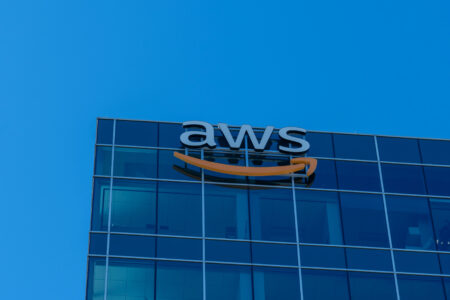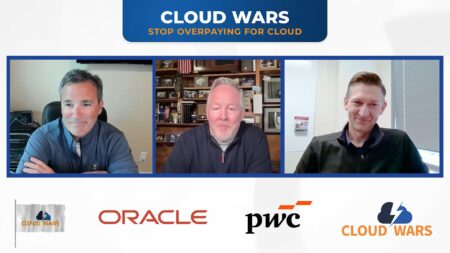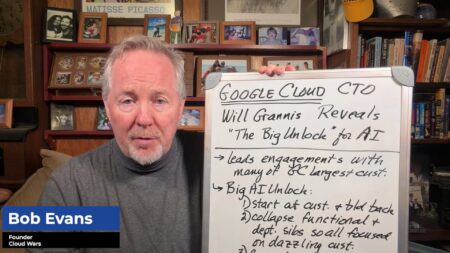A new release of the Salesforce Net Zero Cloud application recently debuted, adding an Environmental, Social, Governance (ESG) reporting module as well carbon accounting functionality for complex organizations such as franchise businesses. It also adds AI-driven visualizations for predictive analysis of supply chain activity.
In total, these and other enhancements in the Spring 2023 release of Net Zero Cloud expand Salesforce’s sustainability functionality to help customers manage the full range of Scope 1 (direct), Scope 2 (indirect from purchases), and Scope 3 emissions (indirect from value chain), company spokespeople told Acceleration Economy in a briefing. The continued advances also help Salesforce customers respond to pressure from their customers and partners to reduce emissions and raise their sustainability performance.
“Stakeholders are pressuring their companies to make progress to net zero and to better be able to track and report their emissions,” says Jen Brown, global marketing lead for Net Zero Solutions at Salesforce. “It’s become about that relationship that’s downstream, especially in industries including airlines, logistics, and transportation.”

When it comes to engaging with customers on sustainability initiatives, Salesforce officials say they deal with a range of functions and leaders, including Chief Sustainability Officers and sustainability managers, operations and facilities management, COOs and CFOs. They noted the importance of companies having CIO-level involvement earlier in the sustainability tools evaluation process.
Many sustainability programs, and tech buying initiatives, kick off when the CEO begins pushing to develop a sustainability strategy and tactics to support the strategy. When it comes to selecting applications to support sustainability, influencers range from the CEO to sustainability managers and many C-level titles in between.
Tools Streamline Voluntary ESG Reporting
Kevin Vranes, Global Product Lead for Net Zero Cloud at Salesforce, introduced a new ESG reporting module, which is called the Disclosure and Compliance Hub, as one of the most innovative features of the new release. Customers can leverage the hub to build out reports that align to the Carbon Disclosure Project (CDP) and the Global Reporting Initiative (GRI), among others. Both are prominent voluntary reporting frameworks.
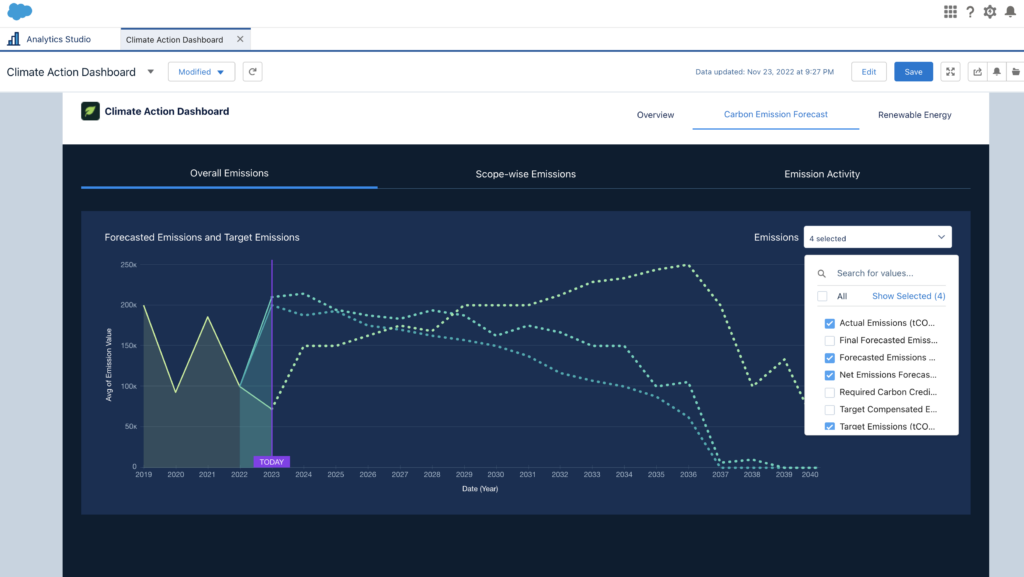
The new functionality will let customers enter, store, extract, and report quantitative data in a sustainability context while creating reports and dashboards to track their progress on an internal basis.
Customers using the Disclosure and Compliance Hub can generate formatted disclosures using a guided process to extract data from qualitative and quantitative responses to questionnaires. Those questionnaires gather specific information such as energy and carbon emissions reporting data. The hub lets users collaborate and create approved reusable responses, which can help produce formatted documents efficiently.
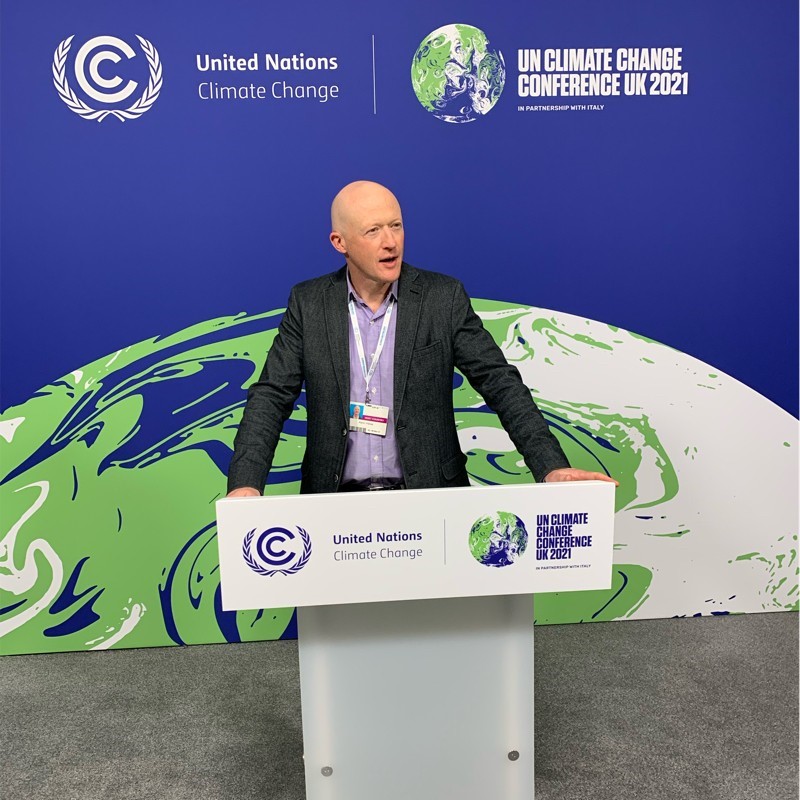
There’s also an opportunity for partners to build additional builders for specific reporting frameworks for use in the Disclosure and Compliance Hub. These report builders can be constructed to align to the large variety of voluntary and regulatory ESG reporting regimes.
Carbon Accounting for Complex Orgs
Multinational or other complex organizations – franchises, hospitality companies, consulting firms, private equity firms – all face unique challenges in tracking emissions data and carbon accounting across their organizations. New functionality in Net Zero Cloud is built specifically for these types of businesses.
“If you are a holding company with 10 subsidiaries, or a hotel chain with thousands of franchisees, you can now much more easily do your full carbon accounting, not just for your own corporate umbrella. With all of those subsidiary businesses or franchisees, it’s very difficult to do,” Vranes said. “We’ve built a whole framework and solution structure around that.”
For companies with fully owned subsidiaries, independent business units, franchises, consulting relationships, or business units as a result of mergers and acquisitions, Net Zero Cloud will now help these “parent” companies account for emissions under a single organizational structure.
Vranes highlighted the value of this functionality in a consulting use case. “The vast majority of consulting in this space is still done in spreadsheets,” he said. “Now they can use their own version of Net Zero Cloud to do the consulting for their clients.”
AI-Powered Supply Chain Visualizations
A key part of Salesforce’s Net Zero Cloud strategy is to deliver enhanced visualization functionality in each release, Vranes said. This newest release includes predictive supply chain functionality leveraging artificial intelligence (AI).
The visualizations will let a customer get predictions about carbon emissions from the company’s supply chain activities. They can view predictive data as well as the percent change compared with a baseline, and use that forecast to establish a plan to reduce emissions. The supply chain view, of course, is vital to helping companies get a handle on their Scope 3 tracking and reduction efforts.

Other new features in the Net Zero Cloud Spring 2023 release include:
- 360-degree visibility into workforce representation data using a new Diversity, Equity, and Inclusion (DEI) dashboard
- Enhanced emissions calculations as a result of more supported fuel types, units of measure, and conversion factors
- Monthly Air Travel Emissions section of the Predicted Air Travel Emissions dashboard gives predictions about a company’s air travel carbon emissions for the next six months, which can be used to prepare plans for reducing emissions







